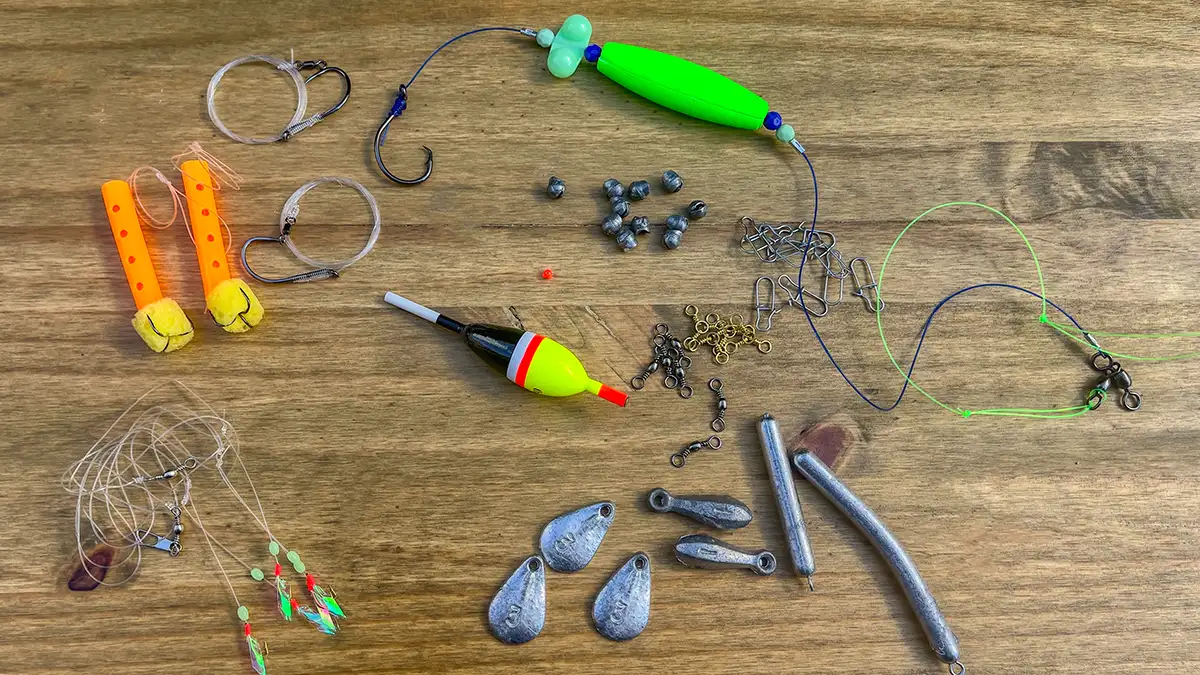When you’re out for blue or flathead catfish, you need rigs that won’t let you down. These fish are tough, and you need gear that’s up to the challenge. The right rig gets your bait in the strike zone and keeps it there until one of these big cats takes the bait.
With the right setups, you’ll be reeling in the giants in no time. Let’s look at the best rigs that’ll help you land those big ones.
These are the Best Catfish Rigs
1. Slip Sinker Rig
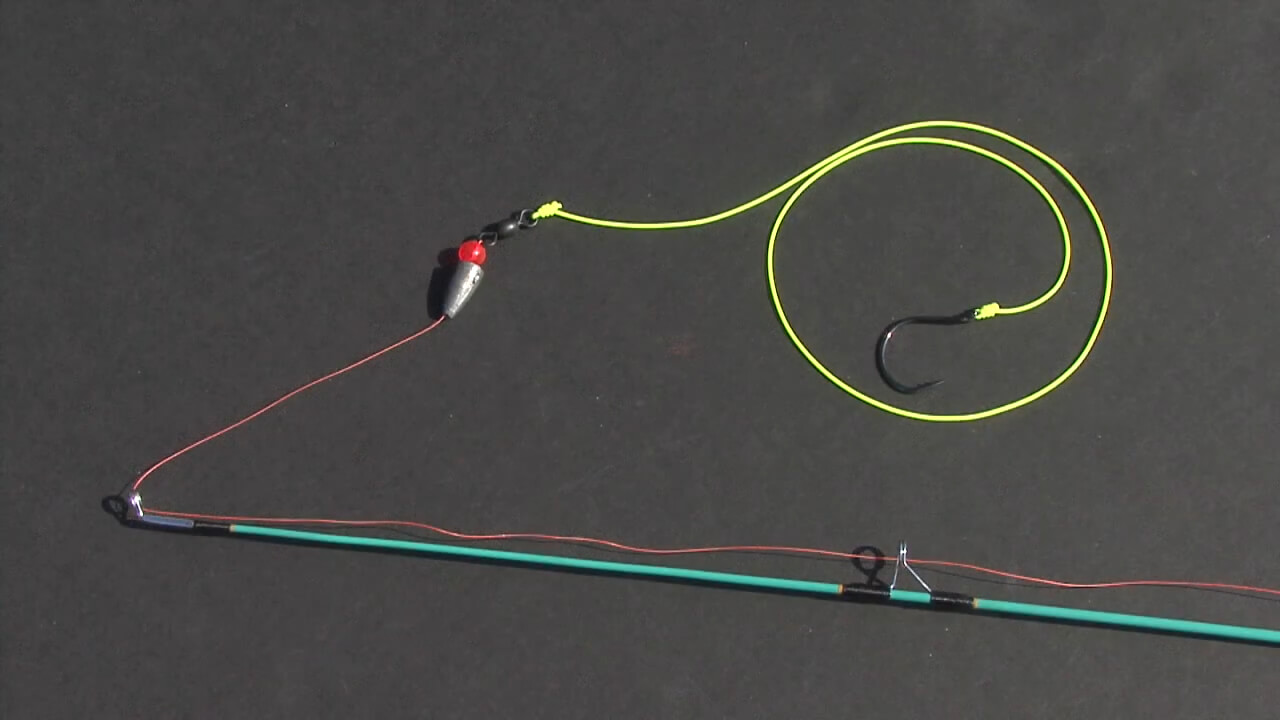
| Component | Details |
|---|---|
| Main Line | 20-50 lb test monofilament or braided line |
| Sinker Type | Egg sinker |
| Sinker Weight | 1 to 3 ounces, depending on current strength |
| Swivel Type | Barrel swivel |
| Leader Line | 12-18 inches of 20-40 lb test monofilament |
| Hook Size | 4/0 to 8/0 circle hook or kahle hook |
| Bait | Live bait (shad, minnows) or cut bait (skipjack) |
When it comes to catfishing, the Slip Sinker Rig is an absolute must-have in your tackle box. This rig is straightforward, reliable, and works wonders in various conditions, especially when targeting big blue or flathead catfish.
How It Works?
The Slip Sinker Rig allows your bait to move naturally with the current, while the sinker stays put. This means your bait can drift into the strike zone where catfish are lurking, without dragging along the bottom and getting snagged.
The egg sinker slides on the main line, which gives your bait freedom of movement, making it more attractive to those big cats.
Setup
Start by threading an egg sinker onto your main line. Then, add a plastic bead right after the sinker to protect your knot. Tie the main line to a barrel swivel, which prevents line twists and gives your setup some extra strength.
To the other end of the swivel, attach a leader line, around 12 to 18 inches long, using a strong knot like the Palomar knot.
At the end of the leader, tie on a sturdy hook—either a circle hook or a kahle hook works great, depending on your preference and the size of bait you’re using.
When to Use It
This rig shines in areas with moderate to strong currents, where you need your bait to stay put but still move naturally. It’s perfect for both live and cut bait, making it versatile for different catfish species and conditions.
Whether you’re fishing rivers, lakes, or reservoirs, the Slip Sinker Rig gives you the flexibility to adapt to the water conditions and target those trophy-sized cats.
2. Santee Cooper Rig
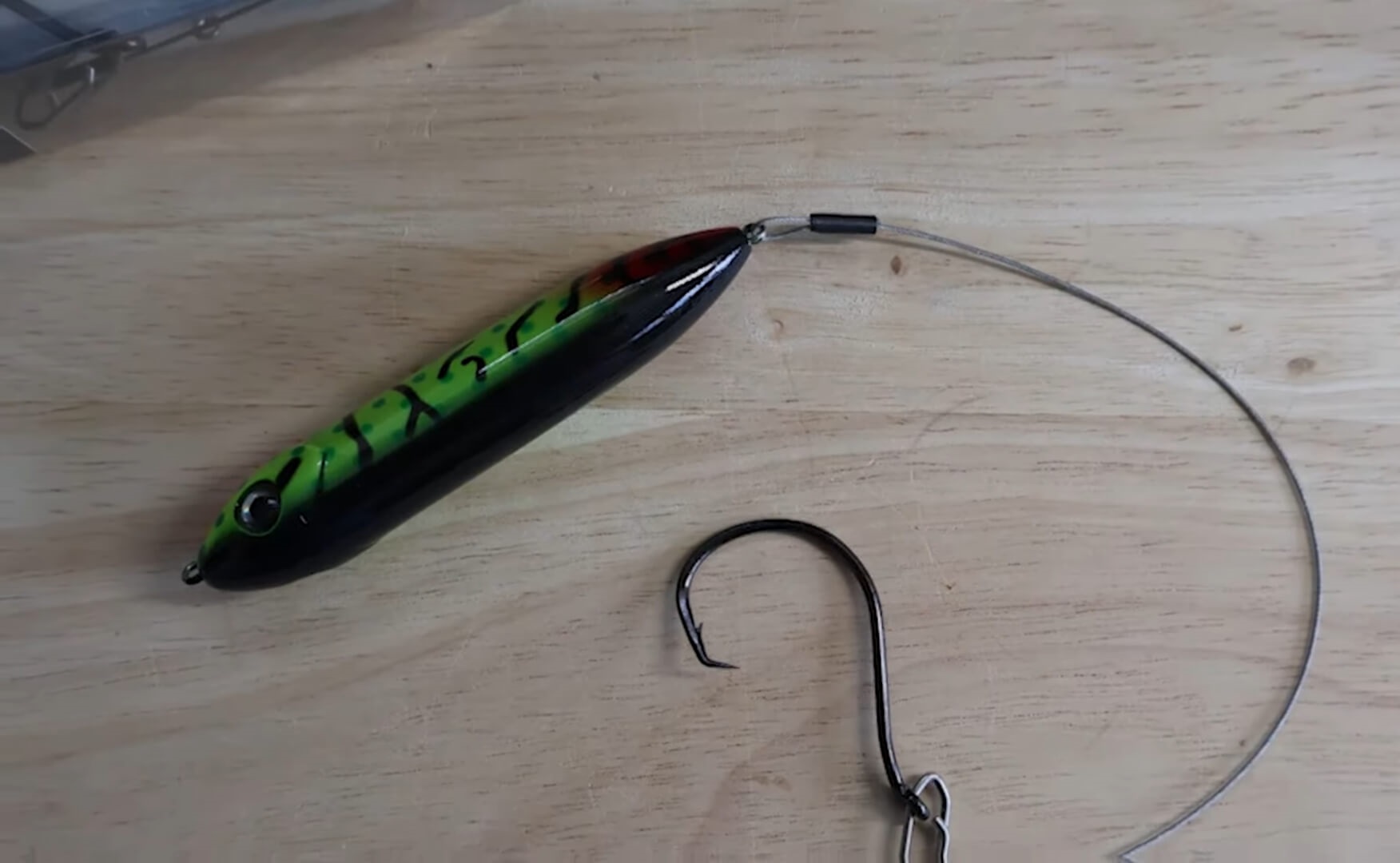
| Component | Details |
|---|---|
| Main Line | 20-50 lb test monofilament or braided line |
| Sinker Type | Egg sinker or no-roll sinker |
| Sinker Weight | 1 to 3 ounces, depending on current strength |
| Swivel Type | Barrel swivel |
| Leader Line | 12-24 inches of 20-40 lb test monofilament |
| Hook Size | 4/0 to 8/0 circle hook or kahle hook |
| Float Type | Small peg float |
| Bait | Live bait (shad, bluegill) or cut bait (skipjack) |
The Santee Cooper Rig is a popular setup among catfish anglers, especially when going after blue catfish. It’s a slight twist on the classic Slip Sinker Rig, adding a small float to lift the bait off the bottom.
This keeps the bait in the strike zone, making it more visible and enticing to catfish cruising just above the bottom.
How It Works
The Santee Cooper Rig is designed to keep your bait suspended just off the bottom, which is where catfish tend to hunt.
The rig allows the bait to move naturally with the water flow, while the float ensures that it stays lifted above any debris or weeds on the bottom. This makes the bait more visible to catfish, increasing your chances of a bite.
Setup
To set up the Santee Cooper Rig, start by sliding an egg sinker or no-roll sinker onto your main line, followed by a bead to protect your knot. Attach a barrel swivel to the main line using a strong knot.
On the other side of the swivel, tie a leader line that’s about 12 to 24 inches long, depending on the depth and current. Before tying the hook, attach a small peg float to the leader, positioning it a few inches above the hook.
This float will keep the bait suspended off the bottom. Finally, tie on your hook, and you’re ready to fish.
When to Use It
This rig is particularly effective in situations where you need to keep your bait just off the bottom, such as in areas with soft mud, weeds, or debris that might otherwise bury your bait.
It’s a great choice for both still and moving waters, whether you’re fishing from a boat or the bank. The Santee Cooper Rig works well with both live and cut bait, making it versatile for different catfish species.
3. Three-Way Rig
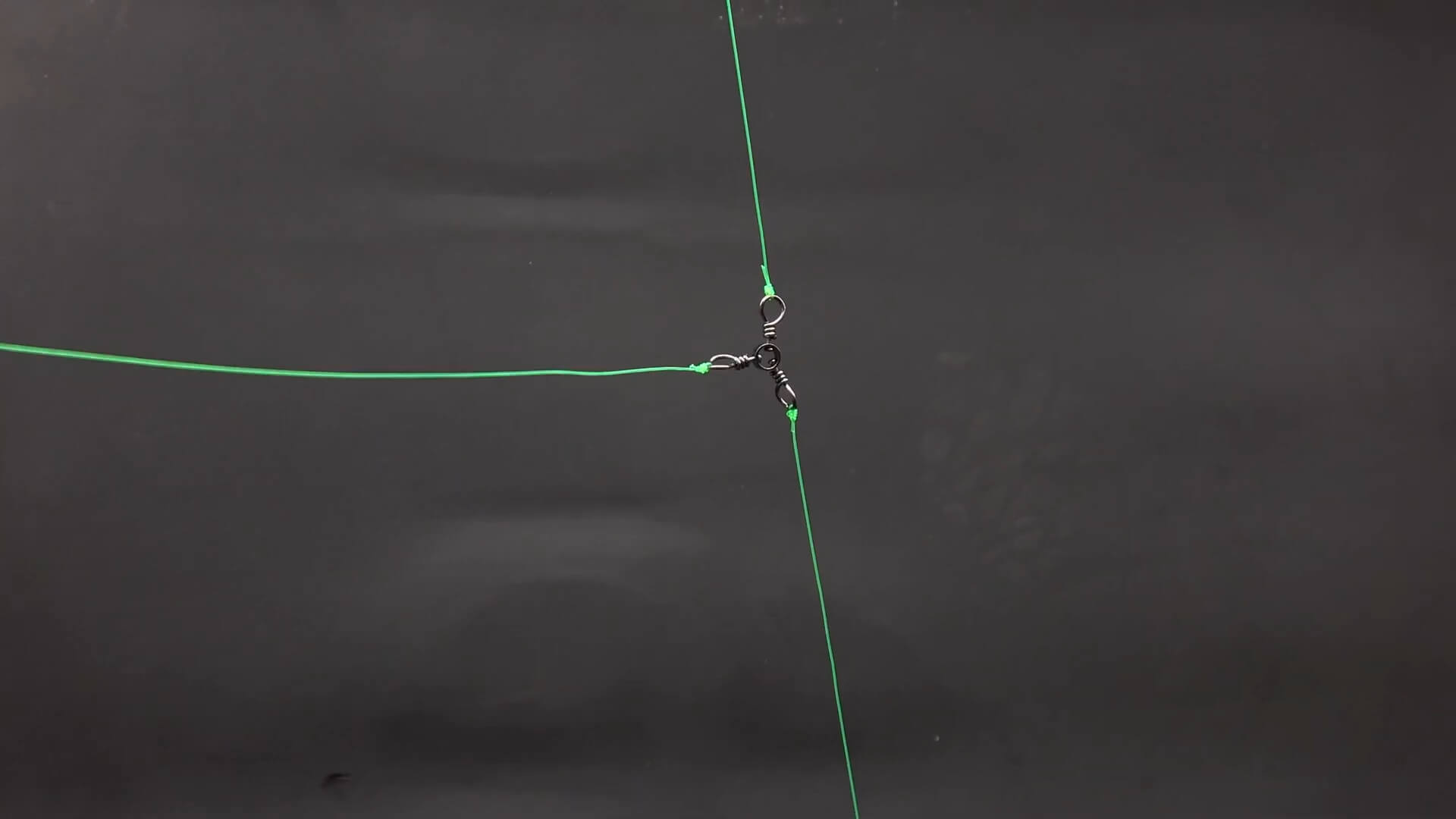
| Component | Details |
|---|---|
| Main Line | 20-50 lb test monofilament or braided line |
| Sinker Type | Bell sinker or bank sinker |
| Sinker Weight | 1 to 4 ounces, depending on current strength |
| Swivel Type | Three-way swivel |
| Leader Line | 12-24 inches of 20-40 lb test monofilament |
| Hook Size | 4/0 to 8/0 circle hook or kahle hook |
| Dropper Line | 6-18 inches of 10-20 lb test monofilament |
| Bait | Live bait (shad, minnows) or cut bait |
The Three-Way Rig is a go-to setup when you need to keep your bait in place and prevent it from drifting away in strong currents. This rig is especially effective in areas with rocky bottoms or heavy cover, where other rigs might struggle to stay put.
It’s a versatile option for targeting big blues and flatheads, particularly in rivers or fast-moving waters.
How It Works
The Three-Way Rig is designed to hold your bait steady in the water column while allowing it to move naturally. The setup involves using a three-way swivel that connects your main line, a dropper line with a sinker, and a leader line with your hook.
The dropper line and sinker keep the rig anchored to the bottom, while the leader allows the bait to move freely in the current.
Setup
To rig up the Three-Way, start by tying your main line to one eye of the three-way swivel. Next, attach a dropper line—about 6 to 18 inches long—to another eye of the swivel.
This line should be slightly lighter than your main line to allow the sinker to break off if it gets snagged. At the end of the dropper, tie on a bell or bank sinker.
On the third eye of the swivel, attach your leader line, which should be 12 to 24 inches long, depending on the water conditions. Finally, tie on your hook, and you’re set.
When to Use It
The Three-Way Rig is ideal for fishing in strong currents, deep holes, or areas with a lot of structure. It’s a solid choice when you need your bait to stay in one spot, like when you’re targeting catfish holding in specific locations.
This rig works well with both live and cut bait, making it versatile for different fishing situations.
4. Float-Paternoster Rig
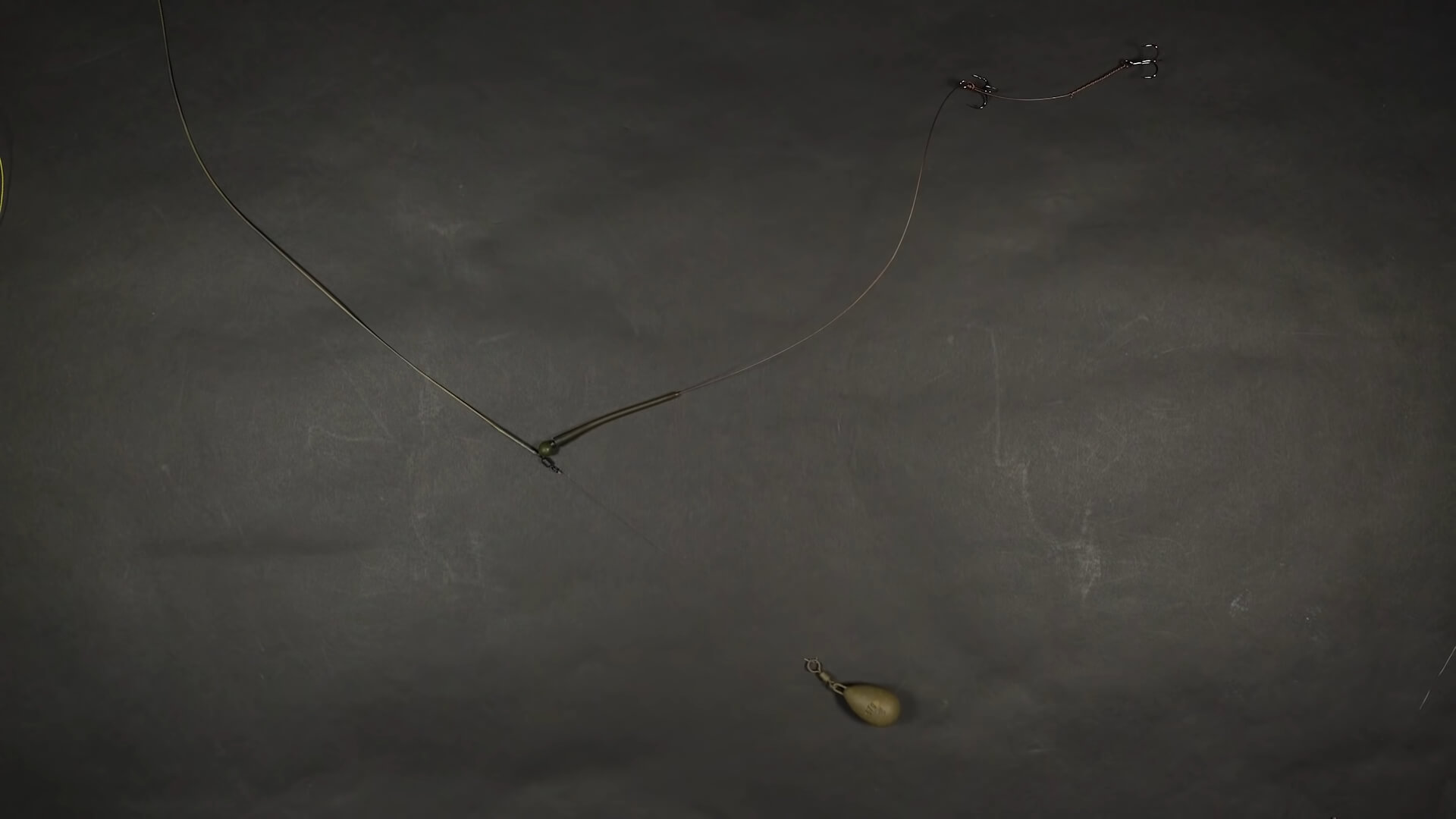
| Component | Details |
|---|---|
| Main Line | 20-50 lb test monofilament or braided line |
| Sinker Type | Bell sinker |
| Sinker Weight | 1 to 3 ounces, depending on depth and current |
| Float Type | Slip float |
| Leader Line | 12-18 inches of 20-40 lb test monofilament |
| Hook Size | 4/0 to 8/0 circle hook or kahle hook |
| Dropper Line | 6-12 inches of 10-20 lb test monofilament |
| Bait | Live bait (bullhead, sucker) |
The Float-Paternoster Rig is a fantastic choice when you need to suspend your bait above the bottom, keeping it in the strike zone for big flathead catfish.
This rig combines the benefits of a float rig with the stability of a paternoster setup, making it ideal for presenting live bait in deep water or around heavy cover.
How It Works
The Float-Paternoster Rig is all about keeping your bait at a specific depth while allowing it to move naturally in the water. The rig uses a slip float to control the depth of the bait, while the dropper line with a sinker keeps the rig anchored.
This setup is perfect for targeting flathead catfish that are holding close to structure but aren’t right on the bottom.
Setup
Start by threading a slip float onto your main line, followed by a bead to protect the knot. Attach a three-way swivel to the main line. To one eye of the swivel, tie a dropper line about 6 to 12 inches long, and attach a bell sinker to the end of the dropper.
This will keep your rig anchored in place. On the remaining eye of the swivel, attach a leader line around 12 to 18 inches long, and then tie on your hook. Adjust the float stop to set the depth at which you want your bait to suspend.
This rig works best with live bait like bullheads or suckers, which stay lively and attract big flatheads.
When to Use It
The Float-Paternoster Rig is ideal for fishing in deep holes, around timber, or in any situation where you want to keep your bait off the bottom but still close to the structure.
It’s especially effective in areas with little to moderate current, where the float can hold the bait in place without being swept away.
5. Carolina Rig

| Component | Details |
|---|---|
| Main Line | 20-50 lb test monofilament or braided line |
| Sinker Type | Egg sinker or bullet sinker |
| Sinker Weight | 1 to 3 ounces, depending on current strength |
| Swivel Type | Barrel swivel |
| Leader Line | 12-24 inches of 20-40 lb test monofilament |
| Hook Size | 4/0 to 8/0 circle hook or kahle hook |
| Bait | Live bait (shad, minnows) or cut bait (skipjack) |
The Carolina Rig is one of the most versatile and widely used setups for catfishing. It’s simple to rig, easy to cast, and highly effective in various conditions, making it a go-to option for both beginners and seasoned anglers.
Whether you’re fishing in lakes, rivers, or reservoirs, the Carolina Rig works wonders for all types of catfish, including blues and flatheads.
How It Works
The Carolina Rig is designed to allow your bait to move freely along the bottom, mimicking the natural movement of prey.
The sliding sinker ensures that the catfish can pick up the bait without feeling the weight, giving you a better chance of a solid hookup. The rig’s simplicity and effectiveness make it a favorite among catfish anglers.
Setup
To set up the Carolina Rig, start by sliding an egg sinker or bullet sinker onto your main line. Add a bead after the sinker to protect the knot from the weight’s impact. Tie the main line to a barrel swivel.
On the other end of the swivel, attach a leader line that’s 12 to 24 inches long, depending on the water depth and current. Finally, tie on a strong hook, such as a circle hook or kahle hook, which works well for holding live or cut bait.
When to Use It
The Carolina Rig is incredibly versatile and can be used in almost any catfishing situation. It’s particularly effective in still waters or areas with a light current, where the bait can drift naturally along the bottom.
The rig is great for fishing in deeper waters, as the sliding sinker allows you to reach the bottom quickly while keeping the bait moving. It’s an excellent choice when targeting catfish in open water or near the edges of structure.
6. Zero Rig
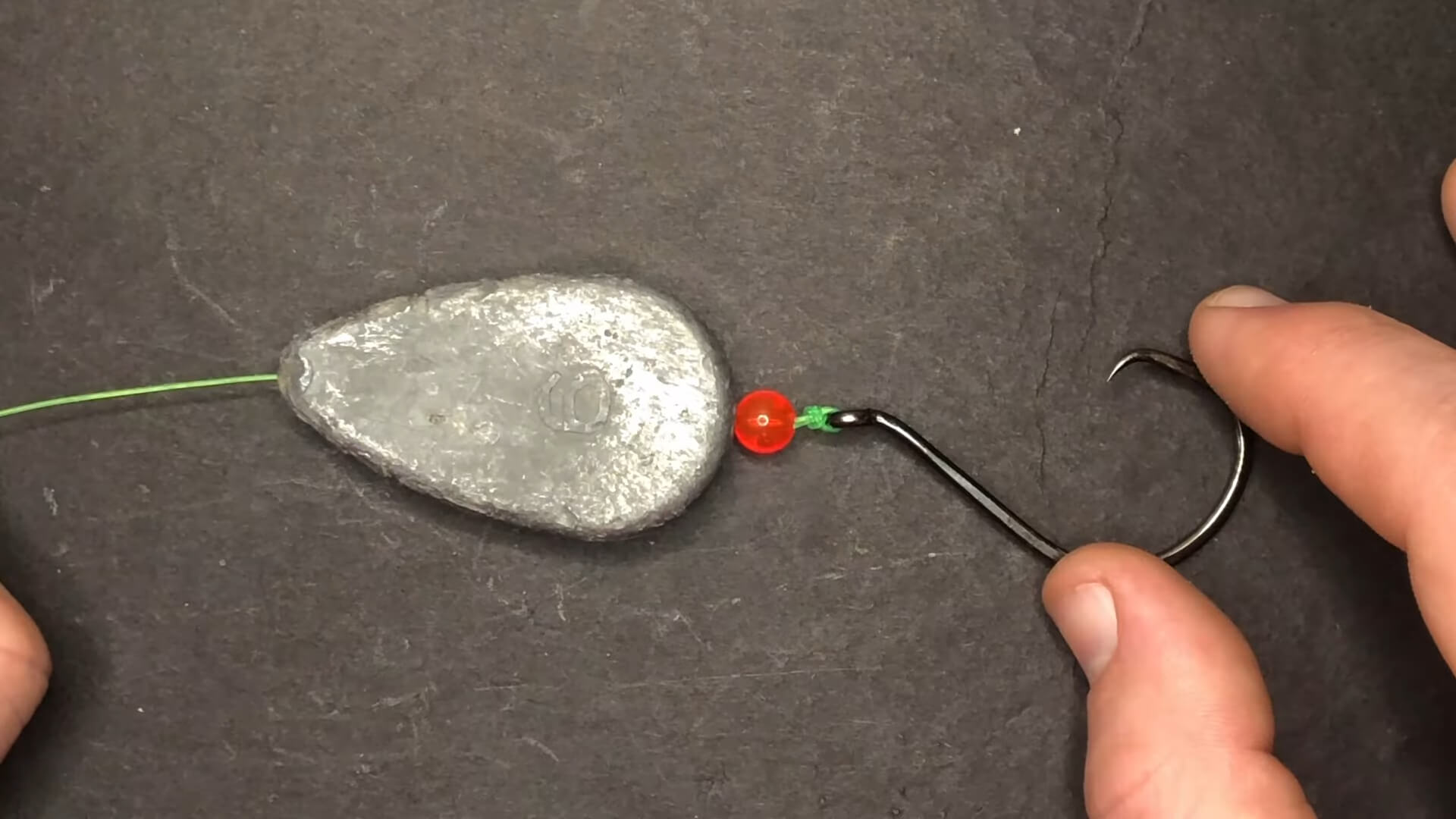
| Component | Details |
|---|---|
| Main Line | 20-50 lb test monofilament or braided line |
| Sinker Type | Weight positioned directly against the hook |
| Sinker Weight | 1 to 2 ounces, depending on water conditions |
| Hook Type | Circle hook, kahle hook, or J-hook |
| Hook Size | 4/0 to 8/0 |
| Bait | Live bait or cut bait |
The Zero Rig is as simple as it gets, but don’t let that fool you—it’s a powerful tool for catching catfish, especially in fast-moving water.
This rig is all about control and precision, making it perfect when you need to keep your bait in place and avoid it drifting too far from the target zone.
How It Works
The Zero Rig is designed to keep the weight right up against the hook, which means there’s no slack for the bait to move around on. This setup is ideal for fast-moving water where you need to keep your bait steady and in the strike zone.
The rig’s simplicity ensures that the catfish gets the bait without any interference from the rig’s components.
Setup
Setting up the Zero Rig couldn’t be easier. Start by threading a weight directly onto your main line, positioning it right up against the hook. That’s it. The weight can be a simple egg sinker or a bullet sinker, depending on what you’ve got on hand and the conditions you’re fishing in.
The hook size should be adjusted based on the bait you’re using and the size of the catfish you’re targeting.
When to Use It
The Zero Rig is particularly effective in fast-moving water where you want to keep your bait from drifting too much. It’s also a great choice in situations where catfish are less active, as the minimal movement of the bait can sometimes entice a bite when other rigs might scare them off.
The rig works well with both live and cut bait, making it versatile for different fishing scenarios.
FAQs
What size hook should I use for blue catfish?
When targeting blue catfish, a 4/0 to 8/0 circle hook is a solid choice. The exact size depends on the bait you’re using and the size of the catfish you’re after. Bigger hooks work better for larger baits and trophy-sized cats.
How much weight should I use for catfishing in a river?
For river catfishing, the weight you use depends on the current strength. Typically, 1 to 4 ounces is a good range. Stronger currents may require heavier weights to keep your bait in place.
What’s the best bait for flathead catfish?
Flathead catfish love live bait, especially lively options like shad, bluegill, or bullheads. They prefer fresh, moving bait that mimics their natural prey.
How do I keep my bait from getting snagged on the bottom?
Using a rig like the Santee Cooper Rig or Float-Paternoster Rig can help keep your bait off the bottom, reducing the chances of snags. These rigs use floats to suspend the bait just above the bottom.
Can I use the same rig for blue and flathead catfish?
Yes, many rigs like the Slip Sinker Rig and Carolina Rig are versatile and work well for both blue and flathead catfish. Adjust the bait and hook size to match the species you’re targeting.
Last Words
Catching blue and flathead catfish requires using the right rigs tailored to the conditions you’re fishing in. By choosing and setting up your gear properly, you maximize your chances of success out on the water.
Each rig we’ve covered has its own strengths, making them essential tools in any catfish angler’s arsenal. Get your gear ready, choose the right rig, and you’ll be pulling in big cats in no time.

